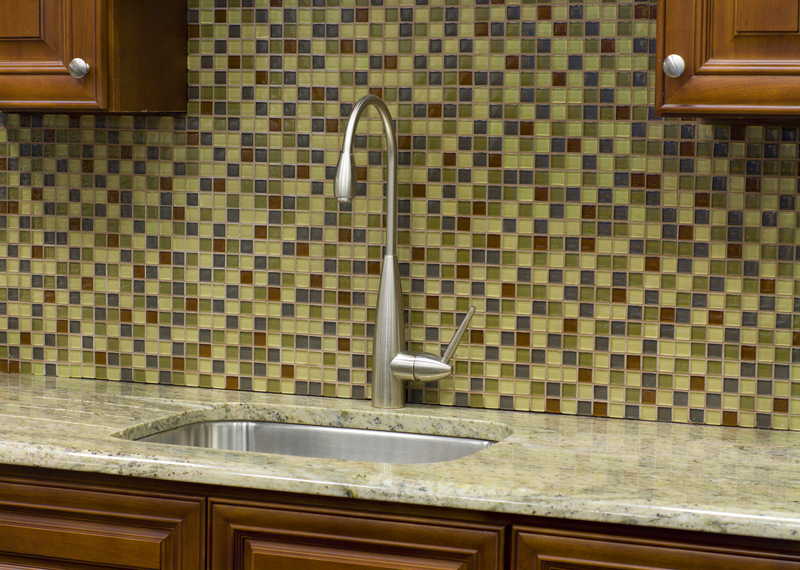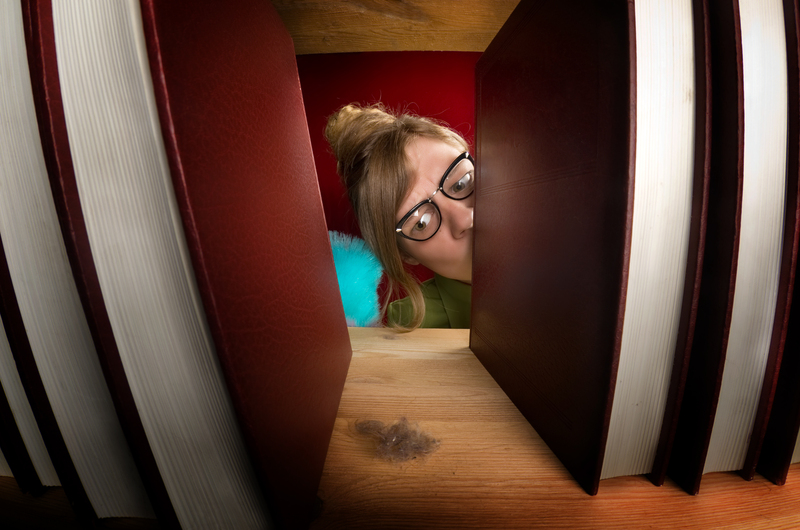Fast and Simple Techniques to Deal with Stubborn Stovetop Grime
Posted on 01/07/2025
Fast and Simple Techniques to Deal with Stubborn Stovetop Grime
Keeping your kitchen clean is essential for both aesthetics and hygiene, but the stovetop is often a trouble spot. Grease splatters, burnt-on food, and accidental spills can accumulate swiftly, leading to grimy, tough residue on your stove. If you've ever felt frustrated by stubborn stovetop grime, you're not alone! Thankfully, with the right strategies, cleaning your stovetop doesn't have to be an exhausting ordeal. In this comprehensive guide, discover fast and simple stovetop cleaning techniques, effective home remedies, and expert advice to restore your stove's sparkle in no time.

Why Stovetop Grime Builds Up--and Why It's a Problem
Many busy households rely on their stovetops daily for preparing meals, making them a magnet for splashes, spills, and smoke residue. Over time, even tiny particles of oil and food can accumulate, forming a sticky, burnt layer that's difficult to remove. Stubborn stove grime not only looks unsightly, but it can also:
- Emit unpleasant odors while cooking
- Attract pests like ants or cockroaches
- Create fire hazards when overlooked
- Damage heating elements on electric stoves or clog burners on gas models
- Affect the taste and quality of your cooking
Understanding why grime forms helps you tackle the mess efficiently and keep your kitchen fresh and inviting.
Pre-Cleaning Steps: Setting Up for Easy Stovetop Cleaning
Before jumping into vigorous scrubbing, set yourself up for success with these simple preparation steps:
- Turn Off the Stove: Ensure all burners are completely cool to avoid burns.
- Remove Grates and Burner Caps: Take off any removable parts, including knobs and drip pans. Soak them in warm, soapy water for a head start on tough residue.
- Brush Off Loose Debris: Use a soft brush or dry cloth to wipe away crumbs, loose bits, and lint.
1. The Classic Baking Soda Paste: A Time-Tested Solution
How Baking Soda Tackles Tough Stove Grime
When it comes to fast and simple stovetop cleaning, baking soda is a proven home hero. Its mildly abrasive texture allows it to scrub off caked-on residue while being gentle on most surfaces.
How to Use Baking Soda for Grimy Stoves
- Create a Paste: Mix 3 parts baking soda with 1 part water.
- Apply Generously: Spread the paste over grimy or greasy spots.
- Let It Sit: Wait 15-20 minutes; this allows the paste to break down encrusted residue for easier removal.
- Scrub and Wipe: Use a gentle scrub brush or sponge to work away grime. Rinse with a clean, damp cloth.
Baking soda is ideal for ceramic stovetops, glass cooktops, and standard metal surfaces. Just be careful not to scour too hard on delicate finishes.
2. Harness the Power of Vinegar for Deep Cleaning
Why Vinegar Works Wonders on Stovetop Grime
White vinegar is an all-natural degreaser. Its acetic acid content breaks down sticky organic residue and dissolves mineral deposits--perfect for stubborn stove-top grime.
Step-by-Step Vinegar Cleaning Method
- Mix in a Spray Bottle: Use equal parts white vinegar and water.
- Spray Liberally: Drench the dirty areas and let the solution work for about 10 minutes.
- Wipe Clean: Use a microfiber cloth to easily lift away loosened grime.
- For Heavier Grime: Combine this method with the baking soda paste, letting the fizzy reaction help break up stuck-on messes.
Not only does vinegar clean and sanitize your stovetop, but it also eliminates lingering odors. Just avoid using vinegar on natural stone surfaces to prevent etching.
3. Lemon Juice: The Citrus Secret
If you're dealing with mild-to-moderate layers of grime, lemon juice can be a kitchen lifesaver. The natural citric acid cuts through grease and residue, and its fresh scent leaves your kitchen smelling great.
- Cut a Lemon: Squeeze and rub the fresh juice directly over greasy or dirty areas.
- Let Sit: Wait 10 minutes for the acid to unlock the sticky mess.
- Scrub and Wipe: Wipe away with a damp sponge or cloth. For extra power, sprinkle a little salt for gentle abrasion.
Lemon juice is especially useful for ceramic and glass stove tops, but always test a small area first.
4. Dish Soap and Hot Water: The Easy Everyday Fix
Sometimes, simplicity is best. Regular dish soap and hot water effectively tackle everyday stove messes, especially if addressed promptly after cooking.
- Fill a Bowl: Use very warm (but not boiling) water and add a few drops of strong grease-cutting dish soap.
- Saturate a Sponge: Dip a non-abrasive sponge and wring lightly.
- Wipe and Repeat: Tackle food spots, grease streaks, or sticky spills in circular motions.
- Dry Thoroughly: Buff with a soft towel for a shiny, streak-free finish.
5. Specialty Cleaners: When You Need Extra Power
For particularly stubborn stovetop grime that resists natural cleaning methods or household staples, consider a specialty stovetop cleaner formulated for your stove's material. Always follow the manufacturer's instructions and check compatibility with your appliance.
- Ceramic and Glass Stove Top Cleaners: Cream-based formulas dissolve burnt residue without scratching.
- Heavy-Duty Degreasers: Designed for heavy and sticky grease buildup common on older gas stoves.
- Stainless Steel Sprays: Remove fingerprints and restore your cooktop's original gleam.
Remember to wear gloves and provide adequate ventilation when using any chemical cleaner.
More Pro Tips for Fast and Simple Stovetop Cleaning
- Tackle spills quickly: The sooner you clean up simmer-overs or greasy spatters, the less time they have to harden.
- Use non-abrasive tools: Skip steel wool or harsh scouring pads that scratch most stove surfaces.
- Soak removable parts: Knobs, grates, and burners clean up faster after soaking in hot, soapy water with a splash of vinegar.
- Combat burnt-on mess: For extremely charred spills, carefully use a plastic scraper or razor blade (for glass cooktops) at a shallow angle.
- Rinse twice: After cleaning, wipe with a clean damp cloth, then dry with a microfiber towel to remove residue and streaks.
Preventing Grime: Keeping Your Stovetop Spotless Longer
Adopt Smart Daily Habits
- Wipe after every use: Make a quick pass with a damp cloth after the stove cools.
- Use splatter guards: These handy covers help contain oily messes when frying or sauteing.
- Clean up spills immediately: Wet spills, especially sugary sauces and acidic foods, cause sticking and burns if left to dry.
Deep Clean Weekly
- Soak grates, knobs, and burners: A weekly soak prevents grime buildup.
- Polish surfaces: Stainless steel benefits from a touch of polish after cleaning to repel fingerprints and stains.
- Clean vent hoods and filters: They trap smoke and grease that would otherwise settle on your stove and countertops.
FAQs: Fast Answers to Common Stovetop Grime Cleaning Questions
1. Can I use oven cleaner on my stovetop?
No! Oven cleaners can be extremely harsh and are designed for porcelain or heavy-duty enamel only. They can permanently damage glass, stainless steel, and ceramic surfaces.
2. What's the best method for electric coil stoves?
Remove coils if possible and wipe the surface with a damp, soapy sponge. Clean drip pans by soaking in hot soapy water, adding a dash of baking soda for stuck-on residue.
3. Is it safe to use a razor blade on my glass stove top?
Yes, but with caution. Use a new, sharp blade, hold at a low angle, and gently scrape off burnt bits (never dig into the surface!).
4. How can I get rid of lingering odors after cleaning?
Wipe the stove with a vinegar-water solution, and boil a few lemon slices in water on the stove to neutralize tough cooking smells.
Fast and Simple Techniques for Different Stove Types
Gas Stovetops
- Treat removable grates and burner caps: Soak in warm, soapy water with a splash of vinegar for 30 minutes. Scrub away any residue and rinse thoroughly.
- Unclog burner holes: Use a toothpick or pin to clear obstructions, ensuring an even flame.
Electric Coil Stovetops
- Lift and clean underneath: Once cool, remove the coils if possible and clean the drip trays underneath.
- Wipe coils with care: Never submerge electric coils. Instead, wipe with a damp cloth and dry before reinstalling.
Ceramic and Glass Cooktops
- Baking soda and vinegar combo: Safe on smooth surfaces without scratching.
- Use a glass scraper: Remove baked-on stains with a specialized razor scraper.

Essential Supplies Checklist for Stovetop Grime Removal
- Microfiber cloths (for streak-free drying)
- Soft-bristled scrub brushes
- Non-abrasive sponges
- Baking soda and/or salt
- White vinegar and/or lemon juice
- Spray bottle (for vinegar solution)
- Plastic scraper or razor blade (for smooth surfaces only!)
- Dish soap with degreaser
- Protective gloves
Stocking these supplies ensures you're always prepared for fast and straightforward stovetop grime removal.
Conclusion: Enjoy a Spotless Stove with Little Effort
Stubborn stovetop grime doesn't have to be a dreaded chore. With fast and simple cleaning techniques, like the use of baking soda paste, vinegar spray, lemon juice, or everyday dish soap, you can banish grease and burnt-on food quickly--often using supplies you already have at home.
Remember, regular upkeep and prompt spill cleanup are your best defenses against persistent buildup. By incorporating these tips, you'll not only enjoy a glistening, residue-free stove but also a healthier, more inviting kitchen space. Ready to say goodbye to tough stovetop grime? Start with these practical strategies today for a cleaner home and effortlessly tidy cooking zone!


